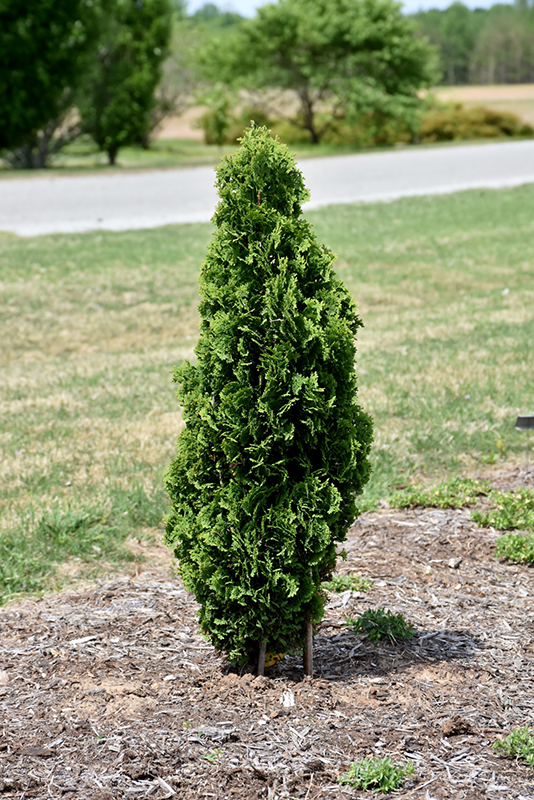Brunswick
422 Bath Road
Brunswick, ME 04011
1-800-339-8111
207-442-8111
Falmouth
89 Foreside Road
Falmouth, ME 04105
1-800-244-3860
207-781-3860
Cumberland
201 Gray Rd (Route 100)
Cumberland, ME 04021
1-800-348-8498
207-829-5619
Brobeck's Tower Arborvitae
Thuja occidentalis 'Brobeck's Tower'
Height: 10 feet
Spread: 3 feet
Sunlight:
![]()
![]()
Hardiness Zone: 2b
Other Names: Eastern White Cedar
Description:
A dwarf, slow growing, narrowly pyramidal evergreen tree with rich green foliage that holds its color in winter; makes an excellent articulation tree or screen, hardy and heat tolerant, takes pruning well; best with some sun, protect from drying winds
Ornamental Features
Brobeck's Tower Arborvitae is primarily valued in the landscape or garden for its distinctively pyramidal habit of growth. It has rich green evergreen foliage. The scale-like sprays of foliage remain green throughout the winter.
Landscape Attributes
Brobeck's Tower Arborvitae is an evergreen tree with a strong central leader and a distinctive and refined pyramidal form. Its average texture blends into the landscape, but can be balanced by one or two finer or coarser trees or shrubs for an effective composition.
This is a relatively low maintenance tree. When pruning is necessary, it is recommended to only trim back the new growth of the current season, other than to remove any dieback. It has no significant negative characteristics.
Brobeck's Tower Arborvitae is recommended for the following landscape applications;
- Accent
- Vertical Accent
- Hedges/Screening
Planting & Growing
Brobeck's Tower Arborvitae will grow to be about 10 feet tall at maturity, with a spread of 3 feet. It has a low canopy with a typical clearance of 1 foot from the ground, and is suitable for planting under power lines. It grows at a slow rate, and under ideal conditions can be expected to live for 50 years or more.
This tree does best in full sun to partial shade. It prefers to grow in average to moist conditions, and shouldn't be allowed to dry out. This plant should not require much in the way of fertilizing once established, although it may appreciate a shot of general-purpose fertilizer from time to time early in the growing season. It is not particular as to soil type or pH. It is somewhat tolerant of urban pollution, and will benefit from being planted in a relatively sheltered location. Consider applying a thick mulch around the root zone in winter to protect it in exposed locations or colder microclimates. This is a selection of a native North American species.

